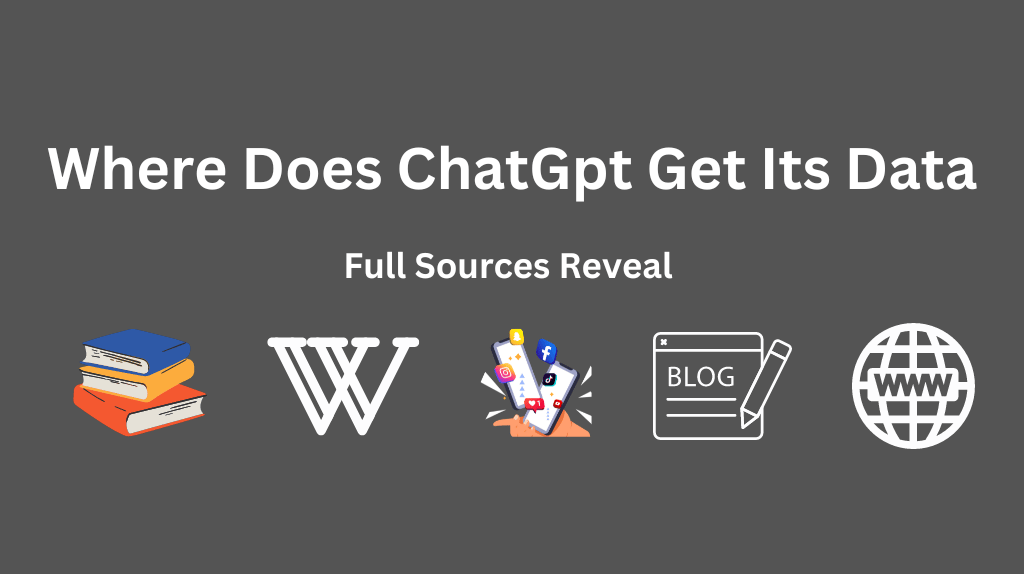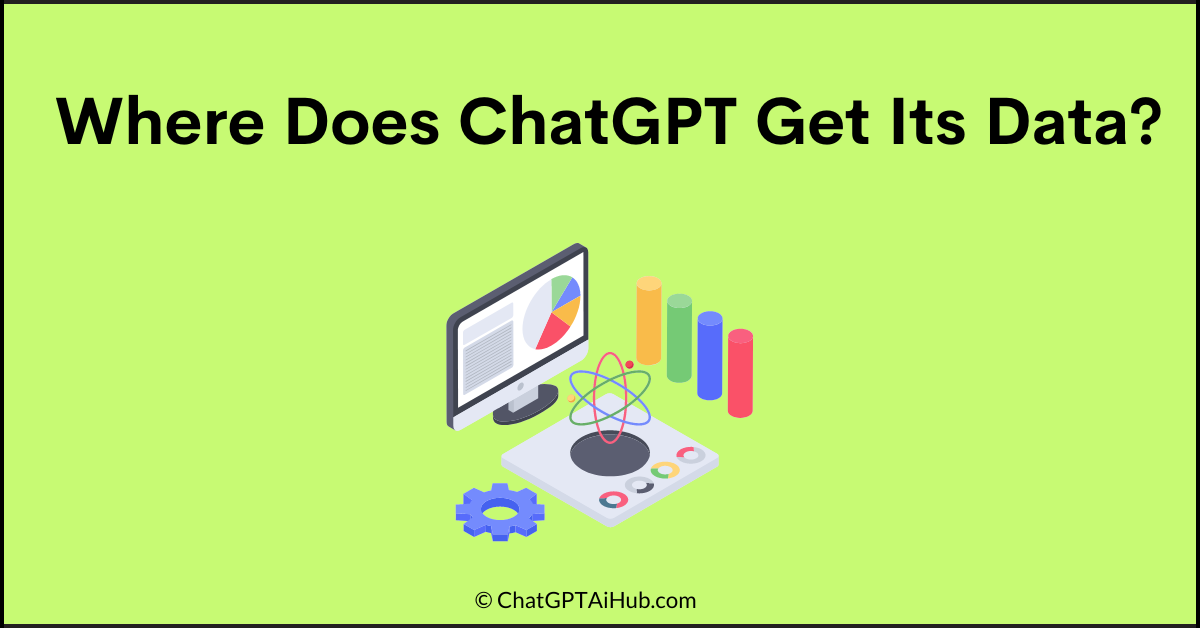Are you curious about where ChatGPT, the impressive AI language model, gets its data? Well, you’re in the right place. In this article, we’ll delve into the fascinating world of ChatGPT’s data collection process and sources. Whether you’re a curious reader or someone seeking information for your own projects, understanding the origins of ChatGPT’s knowledge is crucial. So, let’s explore the intriguing answer to the question: Where does ChatGPT get its data?
The Challenge: Unveiling the Data Sources
Understanding the inner workings of AI language models like ChatGPT can be a daunting task, especially when it comes to deciphering where they obtain their data. As an article reader, you may have encountered the dilemma of not knowing the origins of the information provided by ChatGPT. It’s crucial to address this challenge and shed light on the sources that power ChatGPT’s vast knowledge base. Let’s dive into the fascinating world of data collection behind this remarkable AI technology.
Meeting Reader Expectations and Unveiling the Benefits
By unraveling the mystery behind ChatGPT’s data sources, readers can fulfill their curiosity and gain a deeper understanding of the model’s information retrieval process. Exploring the origins of ChatGPT’s data not only satisfies the reader’s desire for transparency but also empowers them to make informed judgments, enhancing their ability to evaluate the reliability and accuracy of the model’s responses.
we have made various article on How ChatGPT works in HOW TO category. there you can find Comprehensive Guide on How To Export, Retrieve And Save ChatGPT Threads Data, Conversations, And History For Long-Term Storage And Analysis etc.
Crucial Insights: Assessing Reliability, Accuracy, and Limitations of ChatGPT’s Data Collection and Sources”
Understanding ChatGPT’s data collection and sources is crucial for assessing reliability, accuracy, and limitations. Its diverse data from books, articles, journals, code repositories, social media, blogs, and forums informs its knowledge base. Recognizing that responses are pattern-based, not factual, emphasizes the importance of cross-verification. This knowledge empowers informed judgments, encourages critical thinking, and promotes cautious reliance on AI language models.
Unlocking Knowledge: Where Does ChatGPT Get Its Data for Comprehensive and Insightful Responses
- ChatGPT’s training dataset includes books, articles, Wikipedia, scientific journals, code repositories, social media posts, blogs, and online forums, providing valuable information across various domains.
- Incorporating these sources expands ChatGPT’s knowledge base, enabling it to generate well-rounded and insightful responses.
- Code repositories enhance ChatGPT’s understanding of programming languages and technical concepts, allowing it to assist with coding-related queries.
- Social media data helps ChatGPT understand contemporary trends, opinions, and informal language usage, facilitating relevant and resonating responses.
- Training data from blogs, forums, and discussions expose ChatGPT to real-world conversations and different perspectives.
- OpenAI’s rigorous data selection and curation process ensures high-quality, unbiased training data, promoting fairness and inclusivity in responses.

Beyond the Algorithm: Understanding the Sources Behind ChatGPT’s Knowledge
Books and Articles
ChatGPT’s training dataset includes a vast collection of books and articles covering various topics. These written materials provide valuable information across domains such as literature, science, history, technology, and more. By analyzing this extensive range of content, ChatGPT gains a deep understanding of diverse subjects, allowing it to generate well-rounded and insightful responses.
Wikipedia and Scientific Journals
Wikipedia serves as a valuable source of factual data and detailed explanations. The inclusion of Wikipedia articles in ChatGPT’s training dataset contributes to its knowledge base, providing access to a wide array of topics and enabling the model to provide accurate information. Scientific journals also play a significant role in expanding ChatGPT’s knowledge in scientific and academic fields. Research papers and scholarly articles from these journals provide the model with in-depth insights into various scientific topics.
Code Repositories
To enhance its understanding of programming languages and technical concepts, ChatGPT incorporates data from code repositories. By analysing code snippets, documentation, and discussions related to programming, ChatGPT is able to offer assistance and insights on coding-related queries. This allows the model to understand and respond to programming-related questions or challenges from users.
Social Media Posts
ChatGPT considers data from social media platforms, including public posts and discussions, as part of its training data. This exposure to social media data helps the model understand contemporary trends, opinions, and informal language usage. By incorporating these insights, ChatGPT can generate responses that are relevant and resonate with users in conversational settings.
Blogs and Online Forums
ChatGPT’s training data includes blog posts, forum threads, and discussions from a diverse range of sources. By learning from real-world conversations, informal language patterns, and different perspectives found in these sources, ChatGPT can better understand and generate responses that align with user expectations. Incorporating these data sources helps the model adapt to a wide range of conversational scenarios.
Data Selection and Curation
OpenAI follows a rigorous process to select and curate the training data for ChatGPT. This process ensures that the data used is of high quality and reliable. OpenAI aims to avoid favoring any specific group, ideology, or bias during data curation, promoting fairness and inclusivity in the model’s responses.
Web Scraping
ChatGPT employs web scraping techniques to gather data from various sources on the internet. This allows the model to access up-to-date information on a wide variety of topics. By constantly gathering and updating its knowledge base through web scraping, ChatGPT can provide timely and relevant information to users.
User Feedback
User interactions and feedback play a crucial role in improving ChatGPT’s responses over time. OpenAI utilizes natural language processing techniques to understand user feedback and make improvements to the model’s responses based on that feedback. This iterative feedback loop helps refine and enhance the model’s performance in providing accurate and helpful responses.
Knowledge Databases
ChatGPT also utilizes knowledge databases created by experts in various fields. These databases provide detailed and accurate information on specific subjects, allowing ChatGPT to access reliable information when responding to user queries.
Open Data Sources
ChatGPT incorporates data from open data sources, which are publicly available datasets that provide information on specific topics. By leveraging these open data sources, ChatGPT can access additional information and ensure a comprehensive understanding of various subjects.
There are some risks related to ChatGPT as well, such as indirect attacks exploiting AI chatbots and posing risks of scams and data theft.
Overall, the combination of these diverse data sources and the rigorous training process ensures that ChatGPT has a broad knowledge base and can provide informative and relevant responses to user queries.
Conclusion
In conclusion, understanding where ChatGPT gets its data is crucial for assessing the reliability, accuracy, and limitations of the model. By exploring diverse sources, such as books, articles, journals, code repositories, social media, blogs, and forums, we gain insights into ChatGPT’s knowledge base and the factors influencing its responses. Recognizing that responses are pattern-based rather than factual highlights the importance of cross-verification. Armed with this knowledge, readers can make informed judgments, promote critical thinking, and approach AI language models like ChatGPT with caution, ensuring a responsible and discerning use of the technology.


